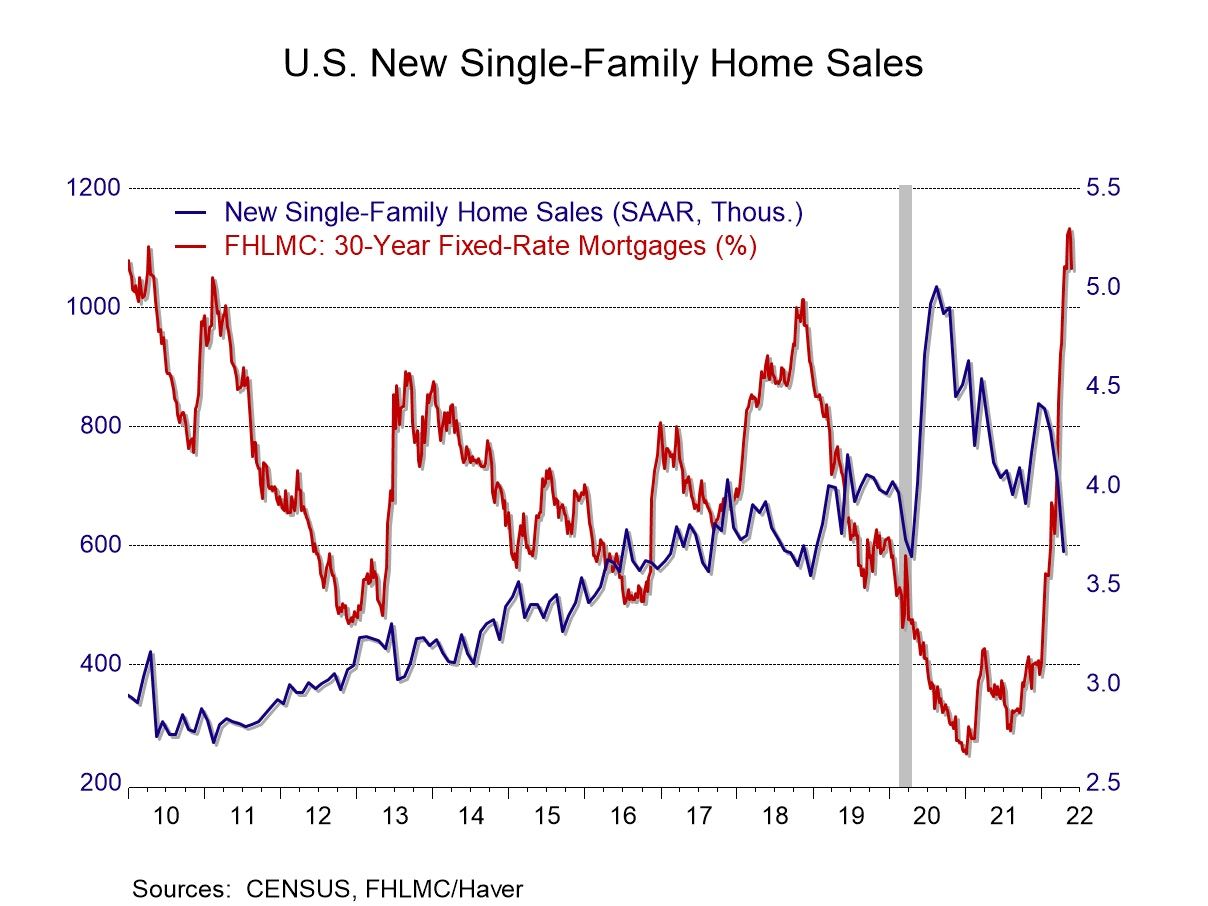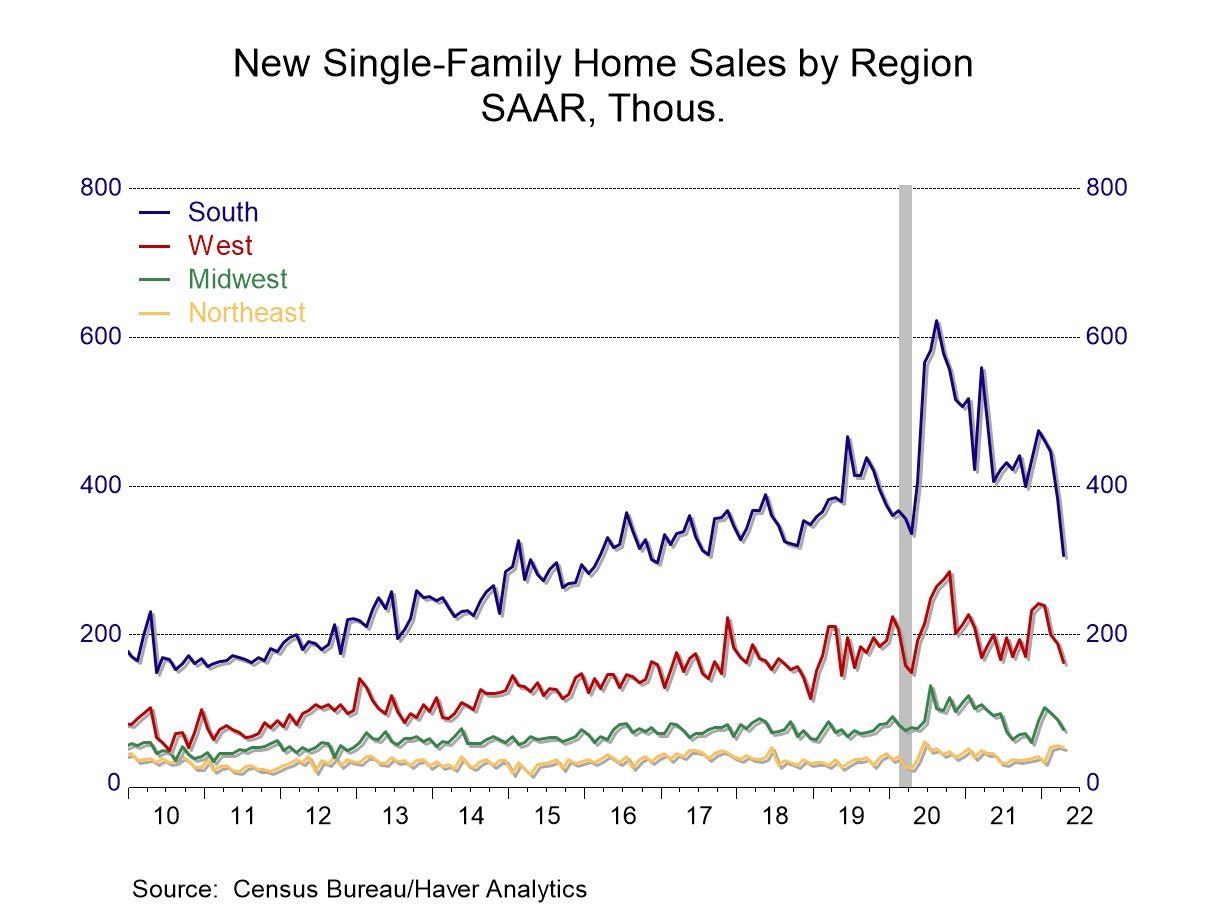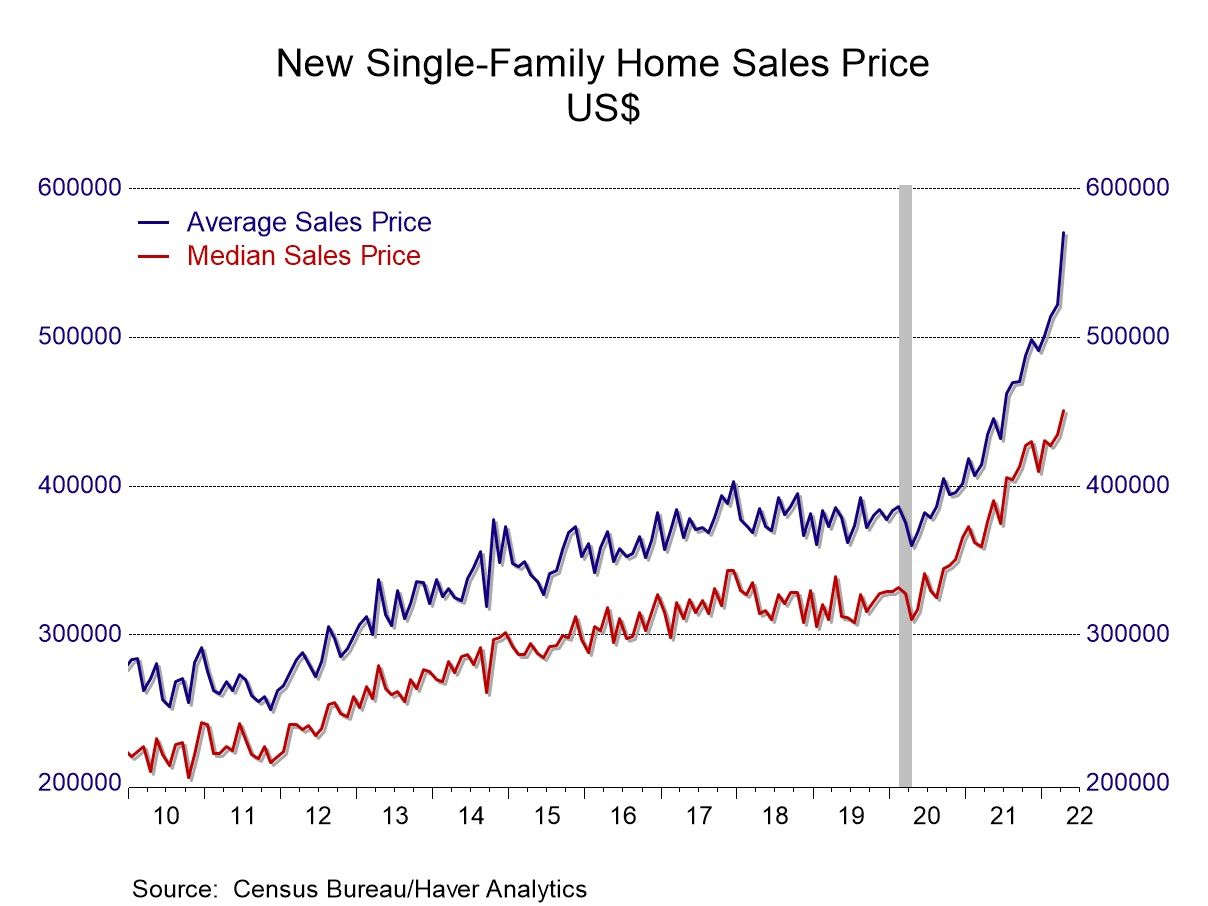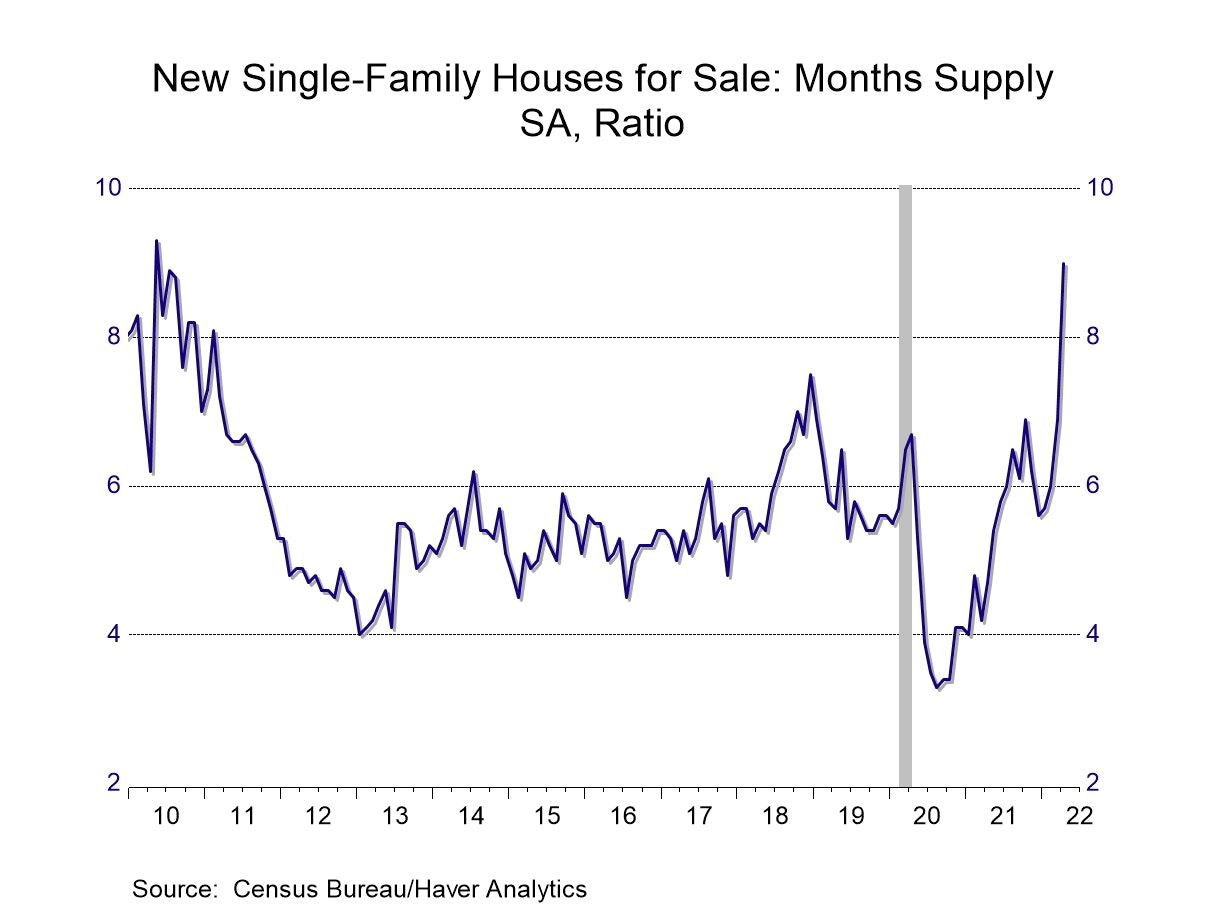U.S. New Home Sales Plunge in April as Prices Jump
by:Tom Moeller
|in:Economy in Brief
Summary
- Sales fall to lowest level in two years.
- Decline spreads throughout the country.
- Median sales price continues to increase.


The new home sales market is unraveling. New single-family home sales during April fell 16.6% (-26.9% y/y) to 591,000 units (SAAR). It was the lowest level of sales since the end of the recession two years earlier. This fourth consecutive monthly decline in sales occurred from 709,000 units in March, revised from 763,000. Earlier figures also were revised. The Action Economics Forecast Survey expected 750,000 sales in April. The data is generated by the U.S. Census Bureau.
Sales declined last month across the country. Sales in the South weakened 19.8% (-36.6% y/y) to 307,000, the lowest level since December 2016. Sales in the Midwest dropped 15.1% (-25.5% y/y) to 73,000, a five-month low. Sales in the West fell 13.8% (-12.4% y/y) to 163,000, the fourth consecutive monthly decline. Sales in the Northeast weakened 5.9% (+17.1% y/y) to 48,000 following two consecutive monthly increases.
The median price of a new home in April strengthened 3.6% (NSA, 19.6% y/y) to a record $450,600 following a 1.8% March increase. The average sales price of a new home increased 9.1% (31.2% y/y) to a record $570,300. These sales price data are not seasonally adjusted.
The decline in sales left the market for new homes flooded in April. The number of unsold new homes jumped 8.3% (40.1% y/y) to 444,000, the most since May 2008.
The seasonally adjusted supply of new homes for sale rose to 9.0 months in April, up from 5.6 months in December. The record low was 3.3 months in August 2020. The median number of months a new home stayed on the market fell to 2.8. The record low was 2.5 months in October of last year. These figures date back to January 1975.
New home sales activity and prices are available in Haver's USECON database. The consensus expectation figure from Action Economics is available in the AS1REPNA database.
Untangling Persistent versus Transitory Shocks to Inflation from the Federal Reserve Bank of San Francisco is available here.


Tom Moeller
AuthorMore in Author Profile »Prior to joining Haver Analytics in 2000, Mr. Moeller worked as the Economist at Chancellor Capital Management from 1985 to 1999. There, he developed comprehensive economic forecasts and interpreted economic data for equity and fixed income portfolio managers. Also at Chancellor, Mr. Moeller worked as an equity analyst and was responsible for researching and rating companies in the economically sensitive automobile and housing industries for investment in Chancellor’s equity portfolio. Prior to joining Chancellor, Mr. Moeller was an Economist at Citibank from 1979 to 1984. He also analyzed pricing behavior in the metals industry for the Council on Wage and Price Stability in Washington, D.C. In 1999, Mr. Moeller received the award for most accurate forecast from the Forecasters' Club of New York. From 1990 to 1992 he was President of the New York Association for Business Economists. Mr. Moeller earned an M.B.A. in Finance from Fordham University, where he graduated in 1987. He holds a Bachelor of Arts in Economics from George Washington University.





 Global
Global
